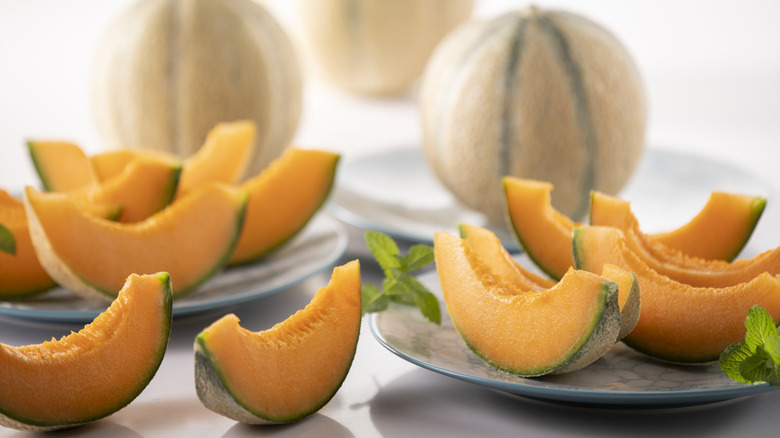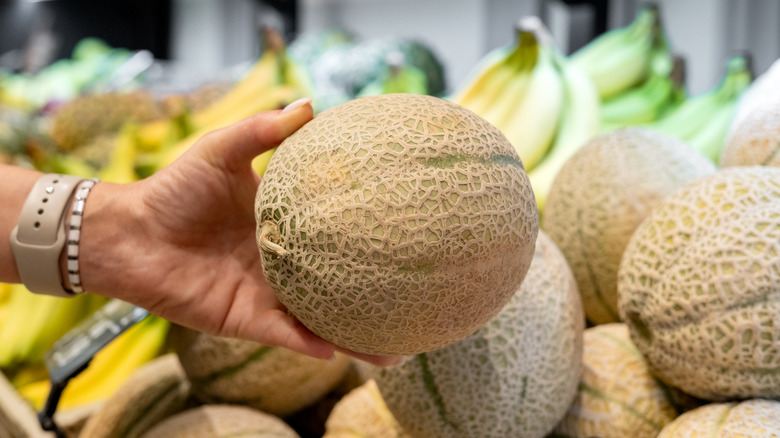With This Foolproof Tip, You'll Never Pick Out A Bad Cantaloupe Again
When you're perusing the produce section of your grocery store, you may find it easy to pick out the freshest apples, peaches, or other small fleshy fruits. Cantaloupe has a harder rind around it, though, making it more difficult to determine which ones are the freshest. Fortunately, there's a foolproof way to tell the fresh from the not-so-fresh melons: Check for a clipped or slipped stem.
Just for reference, there's not technically a difference between cantaloupe and muskmelon. Instead, "muskmelon" is a term that encompasses various types of melons, and two of them are varieties of cantaloupe: North American cantaloupe and European cantaloupe. In either case, a fully ripe cantaloupe will slip right off the vine with a tug or will fall off the vine on its own. This leaves an indentation or scar where the vine was. On the other hand, a cantaloupe that has been clipped before it's fully ripe will still have a short stump of the vine in the stem end.
While clipped cantaloupe may be close to reaching full ripeness, slipped cantaloupe will have the juiciest, sweetest flesh when you cut into it. That's particularly ideal when you plan to use the melon right away for something like a cayenne cantaloupe frozen dessert.
Look for other clues to get the best cantaloupe every time
Although looking for the slipped versus clipped indicators is the best way to choose cantaloupe, there are other clues to look for while shopping for melons. One is to look at the color; a ripe cantaloupe should have a sandy golden rind — not green. Another is to check the hardness of the rind. The opposite side of the vine end should give a little and return to its original state; a rock-hard rind is likely not ripe enough. Alternatively, overly soft spots or discolorations in the rind are indicators of overripeness and even rotting.
Believe it or not, you can also tell the ripeness of a cantaloupe by feeling how much it weighs; the fresher the melon, the heavier it will feel for its size. You can pick up a few while shopping and choose the heaviest. The lighter the melon, the more likely it isn't ripe enough. Additionally, a ripe cantaloupe will have a sweet, slightly musky smell and a deep, solid sound when you tap on it.
If you happen to get a melon that's overripe or you simply forgot to use your cantaloupe after bringing it home, you may still be able to use it. One clever thing to do with overripe cantaloupe is to chop it up and use the pieces that are still good to make a puree for a flavorful spread.

